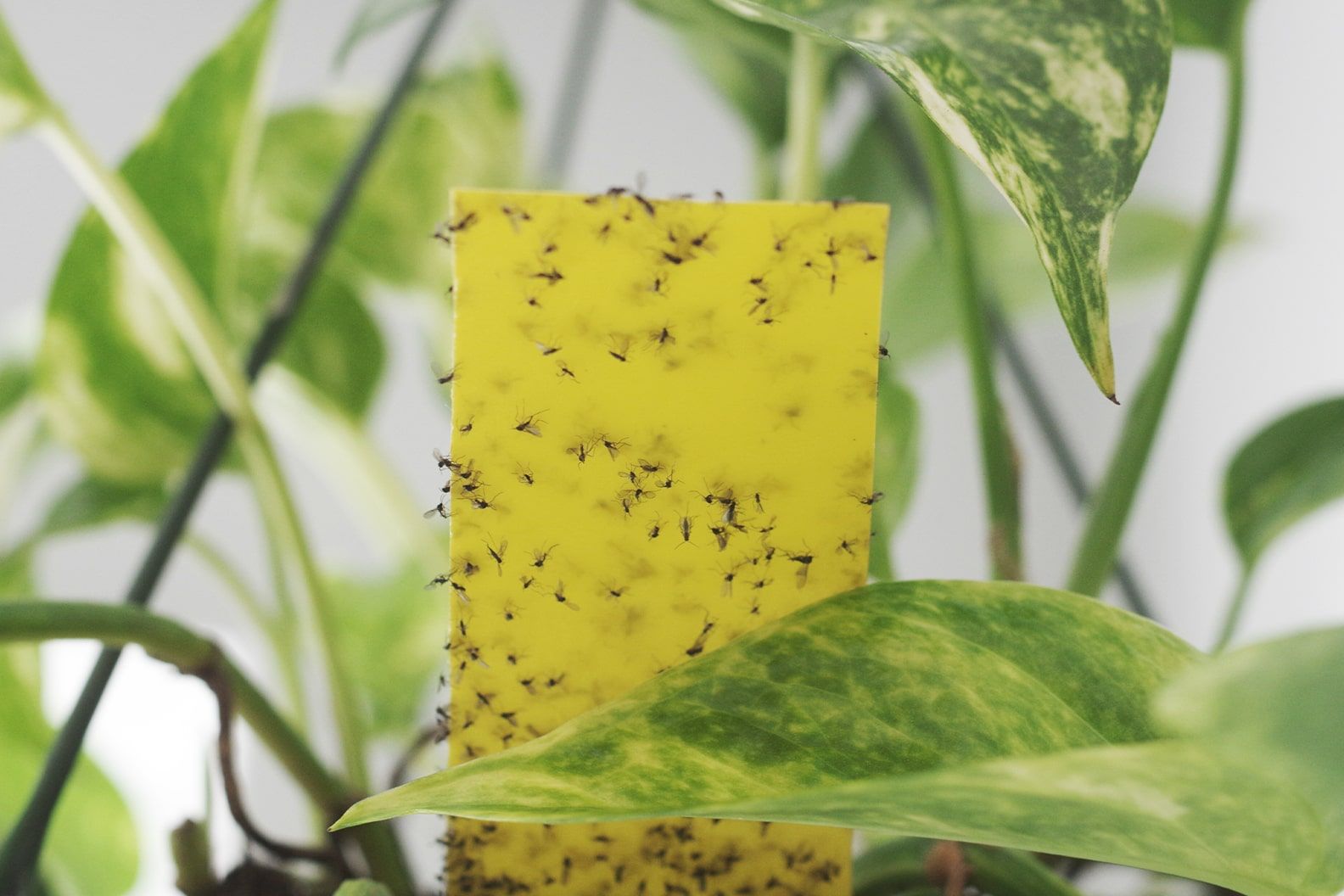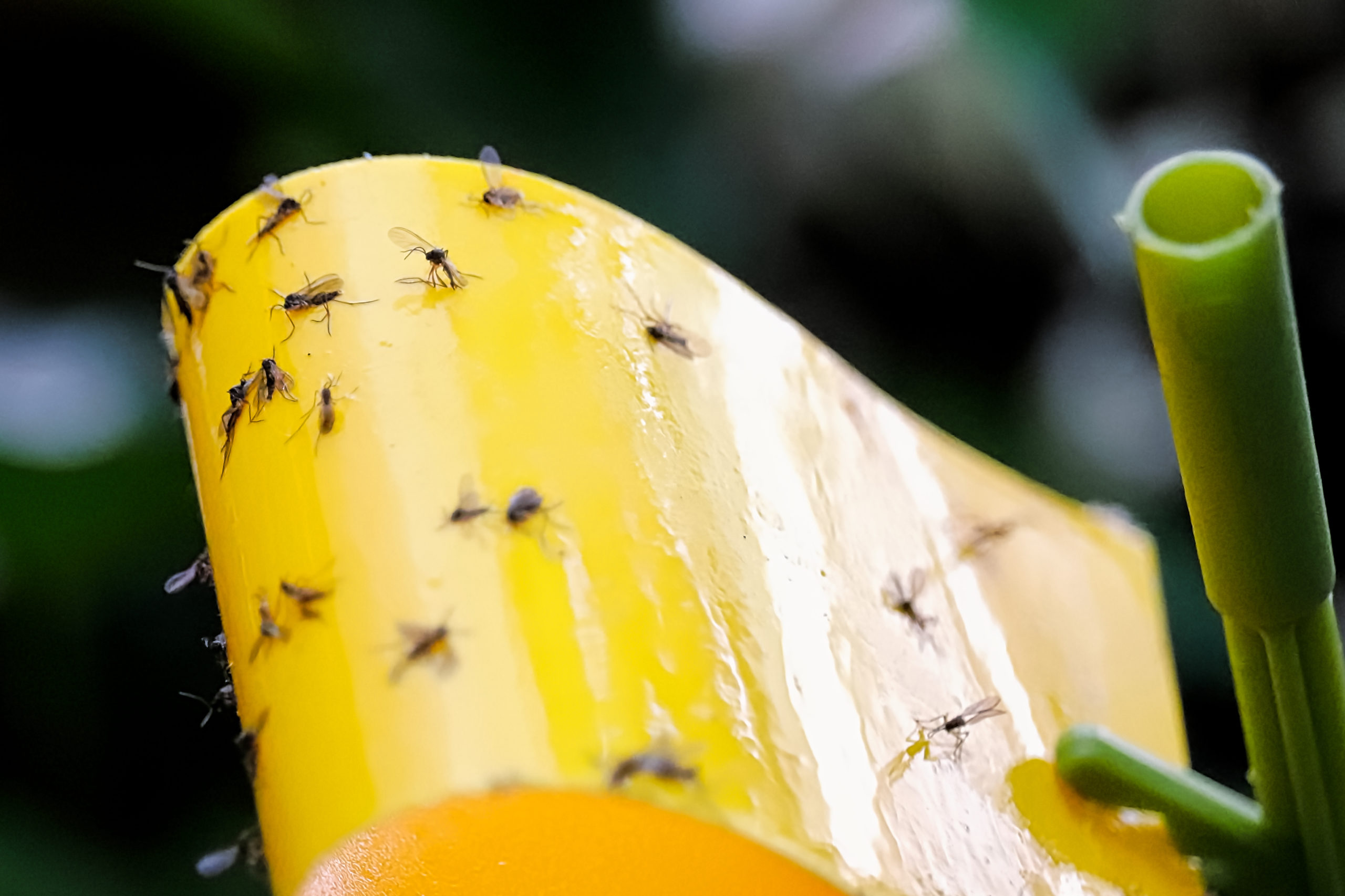“`html
plant Gnats: A Comprehensive Guide
Plant Gnats: A Comprehensive Guide
Plant gnats, those tiny, annoying flies buzzing around your houseplants, are a common nuisance for indoor gardeners. While they might seem harmless, a significant infestation can damage your plants and become a major annoyance. This comprehensive guide will delve into everything you need to know about plant gnats, from identifying them to eradicating them and preventing their return.
Understanding Plant Gnats
Plant gnats, also known as fungus gnats, are small, dark flies belonging to the Sciaridae family. They are attracted to moist soil and decaying organic matter, making indoor potted plants a prime breeding ground. Adult plant gnats are typically 1/8 inch long, with slender bodies and long, delicate legs. They are weak fliers and often seen hovering around the soil surface or running across it.
Life Cycle of Plant Gnats

Understanding the life cycle of plant gnats is crucial for effective control. The life cycle consists of four stages:
Egg
Female plant gnats lay their eggs in moist soil, typically near the surface. These eggs are extremely small and difficult to see with the naked eye. They hatch within a few days, depending on temperature and humidity.
Larva
The larvae are the most damaging stage of the plant gnat’s life. They are legless, translucent, and have a black head. Larvae feed on fungi, decaying organic matter, and, most importantly, plant roots. This root feeding can lead to stunted growth, wilting, and even plant death, especially in seedlings and young plants.
Pupa
Once the larvae are fully grown, they pupate in the soil. The pupal stage lasts for a few days, after which adult gnats emerge.
Adult

Adult plant gnats are primarily a nuisance. They don’t directly damage plants but are responsible for laying eggs and continuing the cycle. Their presence indicates a favorable environment for larval development.
Identifying Plant Gnats
Accurate identification is the first step in addressing any pest problem. Here’s how to identify plant gnats:
Visual Identification
Small, dark flies hovering around the soil surface.
Slender bodies and long, delicate legs.
Weak, erratic flight patterns.
Larvae are translucent with black heads, visible in the top layer of soil.
Signs of Infestation

Increased presence of adult gnats.
Wilting or stunted plant growth.
Yellowing leaves.
Visible larvae in the soil.
Causes of Plant Gnat Infestations
Plant gnats thrive in moist, humid environments. Several factors contribute to infestations:
Overwatering
The most common cause of plant gnat infestations is overwatering. Soggy soil provides the perfect breeding ground for these pests. Ensure proper drainage and allow the soil to dry slightly between waterings.
Poor Drainage
Containers without adequate drainage holes retain excess moisture, creating a favorable environment for plant gnats. Use pots with drainage holes and well-draining potting mix.
Decaying Organic Matter
Plant gnats feed on decaying organic matter. Decomposing leaves, dead plant material, and overly rich potting mixes can attract these pests. Regularly remove dead leaves and debris from the soil surface.
Purchasing Infested Plants
New plants can introduce plant gnats into your home. Carefully inspect plants before purchasing them and quarantine new plants to prevent the spread of pests.
High Humidity
High humidity levels can exacerbate plant gnat problems. While some plants require high humidity, ensure adequate ventilation to prevent excessive moisture buildup.
Controlling Plant Gnats
Several methods can effectively control plant gnat infestations. A combination of approaches often yields the best results.
Cultural Control
Cultural control involves modifying your plant care practices to create an unfavorable environment for plant gnats.
Allow Soil to Dry
Let the top inch or two of soil dry out between waterings. This deprives larvae of the moisture they need to survive.
Improve Drainage
Use well-draining potting mix and containers with drainage holes. Consider adding perlite or coarse sand to improve drainage.
Remove Decaying Matter
Regularly remove dead leaves, flowers, and other debris from the soil surface. This eliminates potential food sources for larvae.
Top Dressing
Adding a layer of sand or gravel on top of the soil can make it less attractive to adult gnats for egg-laying and less hospitable to larvae.
Biological Control
Biological control involves using natural predators or pathogens to control plant gnats.
Beneficial Nematodes
Steinernema feltiae nematodes are microscopic roundworms that parasitize plant gnat larvae. They are applied to the soil and effectively kill larvae within a few days. They are a very effective and safe method.
Bacillus thuringiensis israelensis (Bti)
Bti is a naturally occurring bacterium that produces toxins that kill plant gnat larvae. It is available in liquid or granular form and can be applied to the soil.
Predatory Mites
Hypoaspis miles mites are predatory mites that feed on plant gnat larvae. They are effective in controlling infestations in greenhouse and indoor settings.
Chemical Control
Chemical control should be used as a last resort, as it can harm beneficial insects and the environment.
Insecticidal Soap
Insecticidal soap can kill adult gnats and larvae. Apply it directly to the soil and foliage.
Neem Oil
Neem oil is a natural insecticide that can kill plant gnat larvae and adults. It is applied as a soil drench or foliar spray.
Pyrethrin-based Insecticides
Pyrethrin-based insecticides are effective against adult gnats. However, they can be harmful to beneficial insects and should be used with caution.
Traps
Traps can help monitor and reduce adult plant gnat populations.
Yellow Sticky Traps
Yellow sticky traps attract adult gnats, which get trapped on the sticky surface. Place them near the soil surface.
Apple Cider Vinegar Traps
Fill a small container with apple cider vinegar and a drop of dish soap. Cover the container with plastic wrap and poke holes in it. Adult gnats are attracted to the vinegar and get trapped in the liquid.
Potato Slices
Place slices of raw potato on the soil surface. Larvae will be attracted to the potato and can be removed along with the potato slices.
Preventing Plant Gnat Infestations
Prevention is the best approach to managing plant gnats. Follow these tips to minimize the risk of infestations:
Proper Watering
Water plants thoroughly but allow the soil to dry slightly between waterings. Avoid overwatering.
Good Drainage
Use well-draining potting mix and containers with drainage holes.
Regular Inspection
Inspect plants regularly for signs of plant gnats. Check the soil surface and foliage.
Quarantine New Plants
Quarantine new plants for a few weeks to ensure they are free of pests before introducing them to your collection.
Maintain Cleanliness
Remove dead leaves, flowers, and other debris from the soil surface and surrounding area.
Use Sterile Potting Mix
Use sterile potting mix to avoid introducing plant gnats and other pests.
Ventilation
Provide adequate ventilation to prevent excessive moisture buildup.
Addressing Severe Infestations
In cases of severe infestations, a combination of methods may be necessary. For example, you might use beneficial nematodes along with yellow sticky traps and improved watering practices.
Soil Replacement
For severe infestations, consider replacing the top layer of soil or repotting the plant with fresh, sterile potting mix.
Systemic Insecticides
In extreme cases, systemic insecticides may be necessary. However, these should be used with caution and only as a last resort. Always follow the manufacturer’s instructions.
Conclusion
Plant gnats can be a frustrating problem for indoor gardeners, but with proper identification and control measures, they can be effectively managed. By understanding their life cycle, implementing cultural control methods, and utilizing biological or chemical control when necessary, you can keep your plants healthy and gnat-free. Consistent preventative measures are key to long-term success. Remember to prioritize proper watering practices, good drainage, and regular inspection to keep these pesky insects at bay.
“`
